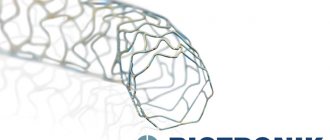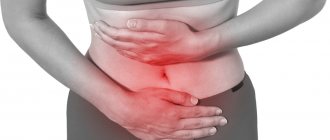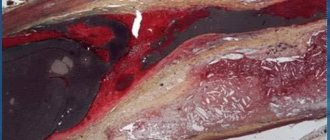Home | About us | Delivery | Advertisers | Login | Registration
- Medicines
- dietary supplementsVitamins
- Categories from A to Z
- Brands from A to Z
- Products from A to Z
- Medical equipment
- beauty
- Child
- Care
- Honey products appointments
- Herbs and herbal teas
- Medical nutrition
- Journey
- Making medicinesStock
Pharmacy online is the best pharmacy in Almaty, delivering medicines to Almaty. An online pharmacy or online pharmacy provides the following types of services: delivery of medicines, medicines to your home. Online pharmacy Almaty or online pharmacy Almaty delivers medicines to your home, as well as home delivery of medicines in Almaty.
my basket
Apteka84.kz is an online pharmacy that offers its customers medicines, medicinal and decorative cosmetics, dietary supplements, vitamins, baby food, intimate products for adults, medical equipment and thousands of other medical and cosmetic products at low prices. All data presented on the Apteka84.kz website is for informational purposes only and is not a substitute for professional medical care. Apteka84.kz strongly recommends that you carefully read the instructions for use contained in each package of medicines and other products. If you currently have any symptoms of the disease, you should seek help from a doctor. You should always tell your doctor or pharmacist about all the medicines you take. If you feel you need further help, please consult your local pharmacist or contact our GP online or by telephone.
© 2021 Pharmacy 84.
Compound
The injection solution contains sodium heparin at a concentration of 5 thousand units/ml.
The auxiliary components of the drug include sodium chloride, benzyl alcohol, and water. 1 gram of gel contains 1 thousand units of sodium heparin , as well as auxiliary components: 96% ethanol, carbomer , dimethyl sulfoxide, propylene glycol, dietanolamine, methyl and propylparaben (additives E 218, E 216), lavender oil and purified water.
Side effects
When used externally, Heparin sodium can cause skin hyperemia and hypersensitivity reactions.
When administering the solution, the following are possible:
- Hypersensitivity reactions ( drug fever , skin hyperemia, rhinitis , feeling of heat in the soles, urticaria , skin itching, collapse, bronchospasm , anaphylactic shock ).
- Headaches, dizziness, diarrhea, loss of appetite, nausea, vomiting;
- Thrombocytopenia (in approximately 6% of patients), sometimes (rarely) with death. Heparin-induced thrombocytopenia (HIT) is accompanied by: arterial thrombosis , skin necrosis and gangrene , stroke , myocardial infarction . In case of severe HIT (when the platelet is reduced to half the original number or below 100 thousand/μl), heparin should be stopped immediately.
- Local reactions ( hematoma , hyperemia , pain, ulceration, irritation at the injection site, bleeding).
- Bleeding. Typical ones are considered to be from the urinary tract and gastrointestinal tract, in areas that are subject to pressure, at the site of drug administration, from surgical wounds. Hemorrhages are also possible in various internal organs: in the retroperitoneal space, corpus luteum, adrenal glands, etc.
With long-term use of Heparin, intermittent alopecia , osteoporosis , hypoaldosteronism , soft tissues become calcified, spontaneous bone fractures occur, and the activity of liver transaminases increases.
Pharmacodynamics and pharmacokinetics
What is Heparin?
Heparin (INN: Heparin) is an acidic mucopolysaccharide with Mr about 16 kDa. A direct anticoagulant that helps slow down the formation of fibrin .
The gross formula of heparin is C12H19NO20S3.
Pharmacodynamics
The mechanism of action of heparin is based primarily on its binding to AT III (its plasma cofactor). Being a physiological anticoagulant , it potentiates the ability of AT III to suppress activated coagulation factors (in particular, IXa, Xa, XIa, XIIa).
When used in high concentrations, heparin also inhibits thrombin activity .
Suppresses activated factor X, which is involved in the internal and external blood coagulation system.
The effect occurs when significantly lower doses of heparin are used than are required to inhibit the activity of coagulation factor II ( thrombin ), which promotes the formation of fibrin from the plasma protein fibrinogen .
This justifies the possibility of using small doses of heparin (subcutaneously) for prophylactic purposes, and large doses for treatment.
Heparin is not a fibrinolytic (i.e., it is capable of dissolving blood clots), but it can reduce the size of the blood clot and stop its expansion. Thus, the blood clot is partially dissolved under the action of fibrinolytic enzymes of natural origin.
Suppresses the activity of the enzyme hyaluronidase, helps reduce the activity of surfactant in the lungs.
Reduces the risk of developing MI, acute thrombosis of myocardial arteries and sudden death. In small doses it is effective for the prevention of VTE, in high doses it is effective against venous thrombosis and pulmonary embolism .
Deficiency of AT III at the site of thrombosis or plasma may reduce the antithrombotic effect of the drug
When applied externally, the product has a local antiexudative , antithrombotic and moderate anti-inflammatory effect .
Promotes the activation of fibrinolytic properties of blood, inhibits the activity of hyaluronidase, and blocks the formation of thrombin. Gradually released from the gel and passing through the skin, heparin helps reduce inflammation and has an antithrombotic effect .
At the same time, the patient’s microcirculation improves and tissue metabolism is activated and, as a result, the processes of resorption of blood clots and hematomas are accelerated, and tissue swelling is reduced.
Pharmacokinetics
When used externally, absorption is negligible.
After injection under the skin, TCmax is 4-5 hours. Up to 95% of the substance is in a state bound to plasma proteins, Vp - 0.06 l/kg (the substance does not leave the vascular bed due to strong binding to plasma proteins).
It does not penetrate the placental barrier or into breast milk.
Metabolized in the liver. The substance is characterized by rapid biological inactivation and short duration of action, which is explained by the participation of the antiheparin factor in its biotransformation and the binding of heparin to the macrophage system.
T1/2 - 30-60 minutes. Excreted by the kidneys. Up to 50% of the substance can be excreted unchanged only if high doses are used. It is not excreted by hemodialysis.
Reviews
Heparin is an effective and well-studied antithrombotic agent , the mechanism of action of which is to suppress the activity of thrombin , which catalyzes the biotransformation of fibrinogen into fibrin and a number of other reactions in the hemostatic system.
Most often, the external use of gel and ointment forms of the drug is discussed on the Internet. Reviews of heparin-containing ointments and gels (in particular, reviews of Heparin Acrigel 1000 ) are overwhelmingly positive: such drugs really help with bruises, thrombophlebitis and hemorrhoids , and also remove localized infiltrates well.
Use during pregnancy and lactation
Heparin solution is not contraindicated for pregnant women. However, despite the fact that the active substance of the drug does not penetrate into milk, its use in nursing mothers in some cases led to the rapid (within 2-4 weeks) development of osteoporosis and spinal damage.
The feasibility of use should be decided individually, taking into account the risk to the fetus/benefit to the mother ratio.
There are no data on the use of the gel during pregnancy and lactation.
Indications for use
Indications for use of the gel
Heparin gel is used for the treatment and prevention of thrombophlebitis of the superficial veins , phlebitis (post-injection and post-infusion), lymphangitis , superficial periphlebitis, elephantiasis, localized infiltrates, bruises, swelling and injuries (including muscles, joints, tendons), superficial mastitis , subcutaneous hematomas .
Indications for use of the solution
Heparin injections are prescribed for thrombosis of deep veins , myocardial arteries , renal veins , pulmonary embolism, thrombophlebitis , atrial fibrillation (including if cardiac arrhythmia is accompanied by embolization), unstable angina , disseminated intravascular coagulation syndrome , acute myocardial infarction, mitral heart disease (prevention of blood clots ), bacterial endocarditis , hemolyticouremic syndrome , lupus nephritis , glomerulonephritis , for the prevention and treatment of microthrombosis and microcirculation disorders.
For preventive purposes, the drug is used during surgical interventions that use extracorporeal blood circulation methods, during cytapheresis, peritoneal dialysis, hemodialysis, forced diuresis, hemosorption, and when washing venous catheters.
When Heparin is administered intravenously, blood clotting slows down almost immediately, when administered into a muscle - after 15-30 minutes, when administered subcutaneously - after 20-60 minutes, when administered by inhalation, the effect is most pronounced after 24 hours.
special instructions
Due to the risk of hematoma formation at the injection site, the solution should not be injected into the muscle.
The solution may acquire a yellowish tint, which does not affect its activity or tolerability.
When prescribing the drug for therapeutic purposes, the dosage should be selected taking into account the aPTT value.
During treatment with the drug, organ biopsies and other medications should not be administered intramuscularly.
To dilute the solution, only 0.9% NaCl solution can be used.
The gel should not be applied to mucous membranes or open wounds. In addition, it is not used in the presence of purulent processes. The use of ointment is not recommended for DVT.
Unfractionated Heparin
Heparin with an average molecular weight of 12-16 thousand daltons, which is isolated from bovine lung or the mucous membrane of the intestinal tract of pigs, is called unfractionated. It is used in the production of drugs that have local and systemic effects (heparin containing ointments and solutions for parenteral administration).
The drug, through interaction with AT III (indirectly), inhibits the main enzyme of the blood coagulation system, as well as other coagulation factors, and this in turn leads to antithrombotic and anticoagulation effects.
Endogenous heparin in the human body can be found in muscles, intestinal mucosa, and lungs. In structure, it is a mixture of glycosaminoglycan fractions, which consist of sulfatide residues of D-glucosamine and D-glucuronic acid with a molecular weight of 2 to 50 thousand daltons.
Fractionated Heparin
Fractionated (low molecular weight) heparins are obtained by enzymatic or chemical depolymerization of unfractionated heparins. This Heparin consists of polysaccharides with an average molecular weight of 4-7 thousand daltons.
LMWHs are characterized as weak anticoagulants and highly effective direct-acting antithrombotics. The action of such drugs is aimed at compensating hypercoagulation processes.
LMWH begins to act immediately after administration, while its antithrombotic effect is pronounced and prolonged (the drug is administered only 1 time per day).
Classification of low molecular weight Heparins:
- drugs used to prevent thrombosis/thromboembolism ( Klivarin , Troparin , etc.);
- drugs used to treat unstable angina and MI without a pathological Q wave, thrombosis and thromboembolism , acute DVT, PE ( Fragmin , Clexane , Fraxiparine );
- drugs used to treat severe vein thrombosis ( Fraxiparine Forte );
- drugs used to prevent thrombus formation and coagulation during hemofiltration and hemodialysis ( Fraxiparine , Fragmin , Clexane ).
Analogs
Level 4 ATC code matches:
Girudoproct
Heparoid Zentiva
Heparin ointment
Gepatrombin G
Lyoton
Trombless
Venolife
Hepatrombin
Gel analogues: Heparin-Acrigel 1000 , Lyoton 1000 , Lavenum , Trombless .
Generic injection forms: Heparin J , Heparin-Ferein , Heparin-Sandoz .
Drugs with a similar mechanism of action: tablets - Piyavit , Angioflux , Wessel Due F ; solution - Angioflux , Hemapaxan , Antithrombin III human , Wessel Due F , Fluxum , Anfibra , Fraxiparine , Enixum .
pharmachologic effect
Pharmacological group: anticoagulants .
Group of the drug Heparin, produced in the form of a gel: drugs for the treatment of cardiovascular diseases.
Group of the drug Heparin, produced in injection form: agents affecting blood and hematopoiesis.
Heparin sodium contained in the drug has an antithrombotic effect , slows down the aggregation and adhesion of leukocytes , platelets and erythrocytes ; reduces wall spasm and the degree of vascular permeability; helps improve collateral circulation.
Overdose
Symptoms of overdose with parenteral use are bleeding of varying severity.
Treatment: for minor bleeding caused by an overdose of the drug, it is enough to stop using it. If bleeding is extensive, protamine sulfate (1 mg per 100 IU of heparin) is used to neutralize excess heparin.
Please note that heparin is eliminated quickly. Thus, if protamine sulfate is administered 30 minutes after the previous dose of heparin, it should be administered at half the dose; The highest dose of protamine sulfate is 50 mg.
It is not excreted by hemodialysis.
Cases of overdose with external use of the drug have not been described. Due to the low systemic absorption of the drug, an overdose is considered unlikely. With prolonged use on large surfaces, hemorrhagic complications .
Treatment: discontinuation of the drug, if necessary, use of a one percent solution of protamine sulfate (heparin antagonist).
Contraindications
Heparin containing ointments (Heparin, Heparin-Acrigel 1000, etc.) are contraindicated in cases of hypersensitivity to the components they contain, as well as in diseases accompanied by ulcerative-necrotic processes, and injuries that are accompanied by violations of the integrity of the skin.
Heparin gel (ointment) should be used with caution in case of thrombocytopenia and increased tendency to bleeding.
Contraindications to the use of the injection form of the drug:
- hypersensitivity;
- diseases accompanied by increased bleeding ( vasculitis, hemophilia , etc.);
- bleeding;
- aortic dissection , intracranial aneurysm;
- antiphospholipid syndrome;
- traumatic brain injury;
- hemorrhagic stroke;
- uncontrolled hypertension;
- liver cirrhosis , accompanied by pathological changes in the veins of the esophagus;
- threatened miscarriage;
- menstrual period;
- pregnancy;
- childbirth (including recent);
- lactation period;
- erosive and ulcerative lesions of the stomach and intestinal tract;
- recent surgical interventions on the prostate gland, brain, eyes, bile ducts and liver, as well as the condition after lumbar puncture .
Heparin injections should be prescribed with caution to patients with polyvalent allergies (including bronchial asthma ), diabetes mellitus , arterial hypertension , active tuberculosis , endo- and pericarditis , chronic renal failure, liver failure ; patients undergoing dental procedures or radiation therapy; persons over 60 years of age (especially women); women using an IUD.










